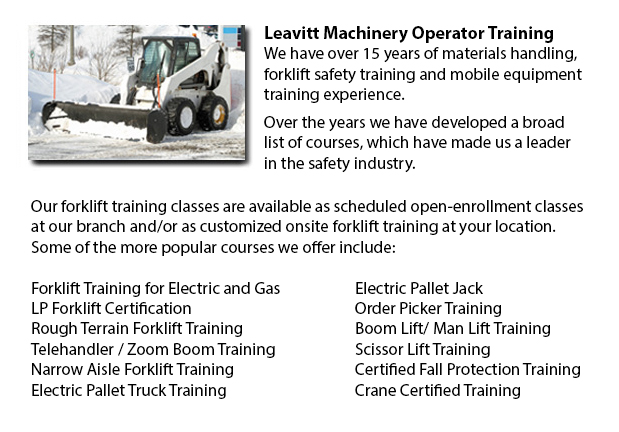
Skid Steer Ticket Red Deer - On a skid-steer loader, the lift arms are next to the driver together with pivot points behind the driver's shoulders. This makes them different compared to a traditional front loader. Due to the operator's nearness to moving booms, early skid loaders were not as safe as traditional front loaders, specially in the operator's exit and entry. Modern skid-steer loaders now have various features in order to protect the driver like for instance fully-enclosed cabs. Like various front loaders, the skid-steer model could push materials from one site to another, is capable of loading material into a truck or trailer and could carry material in its bucket.
Operation
There are lots of times where the skid-steer loader could be utilized rather than a big excavator on the job location for digging holes from the inside. To begin, the loader digs a ramp to be used to excavate the material out of the hole. As the excavation deepens, the equipment reshapes the ramp making it steeper and longer. This is a particularly functional method for digging underneath a structure where there is not sufficient overhead clearance for the boom of a big excavator. For example, this is a common scenario when digging a basement beneath an existing house or building.
The skid-steer loader accessories add much flexibility to the machine. Like for instance, conventional buckets on the loaders could be replaced attachments powered by their hydraulics consisting of backhoes, tree spades, sweepers, mowers, snow blades, cement mixers and pallet forks. Some other popular specialized attachments and buckets comprise tillers, stump grinders rippers, wheel saws, snow blades, trenchers, angle booms, dumping hoppers, wood chipper machines and grapples.
History
In 1957, the first front-end, 3-wheeled loader was invented in Rothsay, Minnesota by brothers Louis and Cyril Keller. The brothers invented the loader so as to help a farmer mechanize the process of cleaning turkey manure from his barn. This particular machine was compact and light and included a back caster wheel which enabled it to maneuver and turn around within its own length, enabling it to carry out the same work as a traditional front-end loader.
During 1958, the Melroe brothers of Melroe Manufacturing Company in Gwinner, N.D. obtained the rights to the Keller loader. They employed the Keller brothers to continue refining their loader invention. The M-200 Melroe was actually the outcome of this particular partnership. This particular model was a self-propelled loader which was introduced to the market in nineteen fifty eight. The M-200 Melroe featured a a rear caster wheel, a 12.9 HP engine, a 750 lb lift capacity and two independent front drive wheels. By 1960, they replaced the caster wheel along with a back axle and launched the first 4 wheel skid steer loader which was referred to as the M-400.
The term "Bobcat" is used as a generic term for skid-steer loaders. The M-400 immediately after became the Melroe Bobcat. The M-440 version was powered by a 15.5 HP engine and has rated operating capacity of 1100 lbs. The company continued the skid-steer development into the middle part of the nineteen sixties and launched the M600 loader.
-
Fall Protection Ticket Red Deer
Fall Protection Ticket Red Deer - The number one reason of death in the construction industry come from fall-related incidents. There is more possibility for fall accidents depending upon the kinds of work being done in your workplace. Therefore, kno... More -
Overhead Crane Certification Red Deer
Overhead Crane Certification Red Deer - The overhead crane certification course is a course that is designed to help trainees, even if they have language or literacy limitations. The course comprises a practical hands-on training session and a classr... More -
Wheel and Track Loader Training in Red Deer
Lift trucks are obtainable in a variety of various models which have various load capacities. Nearly all typical lift trucks utilized in warehouse settings have load capacities of 1-5 tons. Bigger scale models are utilized for heavier loads, like for... More -
Heavy Equipment Certification Red Deer
Heavy Equipment Certification Red Deer - Heavy duty vehicles are big pieces of machines which are usually known as heavy equipment. It is a broad term that literally includes whatever big utility vehicle in the area of agricultural and forestry imple... More -
Heavy Equipment Operator Classes Red Deer
Heavy Equipment Operator Classes Red Deer - A person who has the correct training to be able to use a particular kind or piece of machine is referred to as an equipment operator. There are different ways that an equipment operator can become trained... More -
Forklift Training Programs Red Deer
Forklift Training Programs Red Deer - Are you searching for a job as a driver of a forklift? Our regulatory-compliant mobile equipment operator training offers instruction in kinds of lift trucks, pre-shift check, fuel types and dealing with fuels, a... More -
Crane Safety Training Red Deer
Crane Safety Training Red Deer - Both crane driver and their supervisors must know all the potential problems related to the operation of an overhead crane. All over North America, there is legislation which provides rules for the safe inspection, ma... More -
Aerial Lift Training Red Deer
Aerial Lift Training Red Deer - An aerial work platform is a mechanized access platform. This device provides access to otherwise inaccessible places for people or equipment. Likewise called an elevating work platform or aerial device, the machinery... More

Forklift Training Red Deer
TOLL FREE: 1-888-254-6157
Red Deer, Alberta
forklifttrainingreddeer.com
Email Us
About Us


